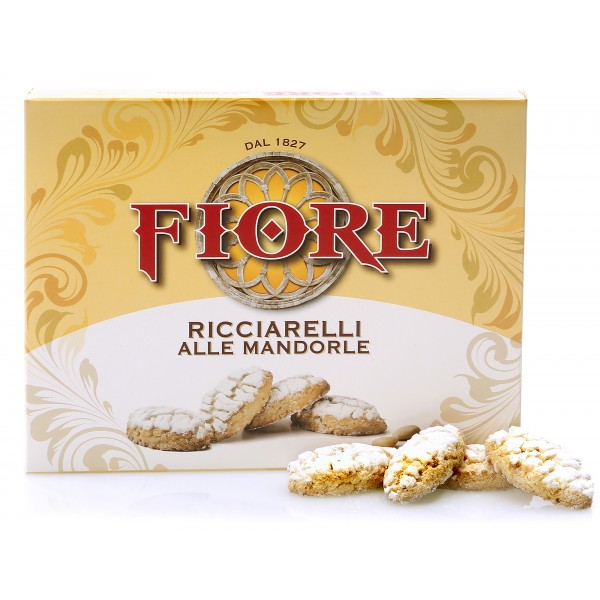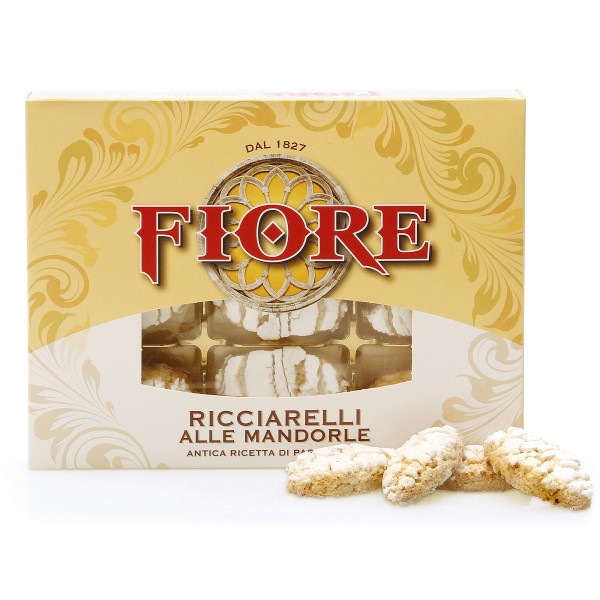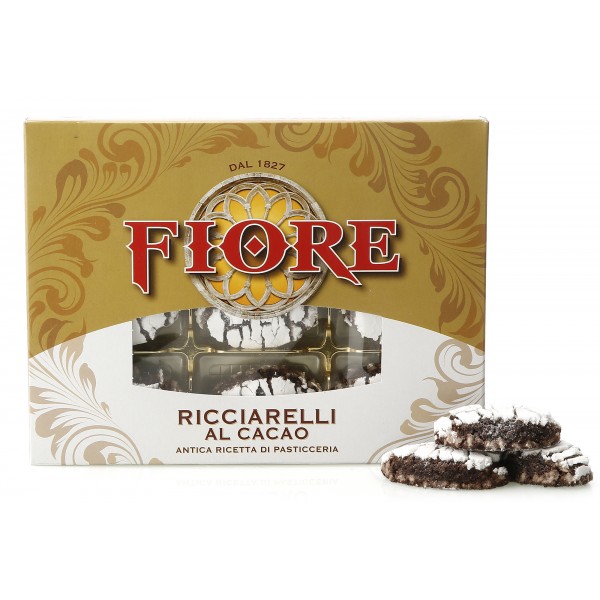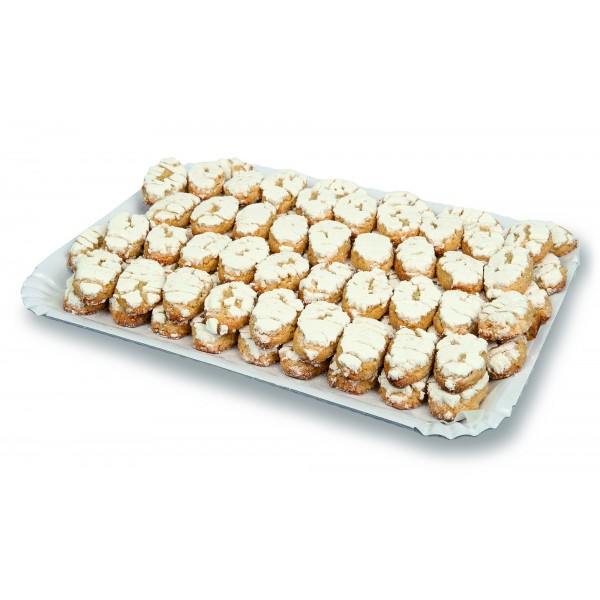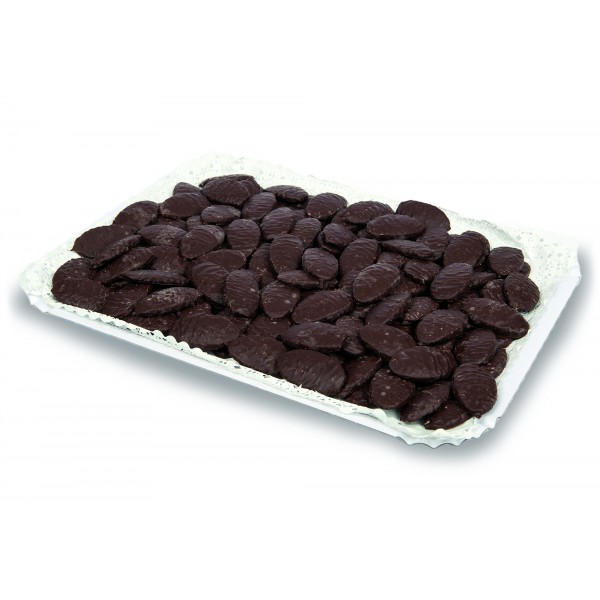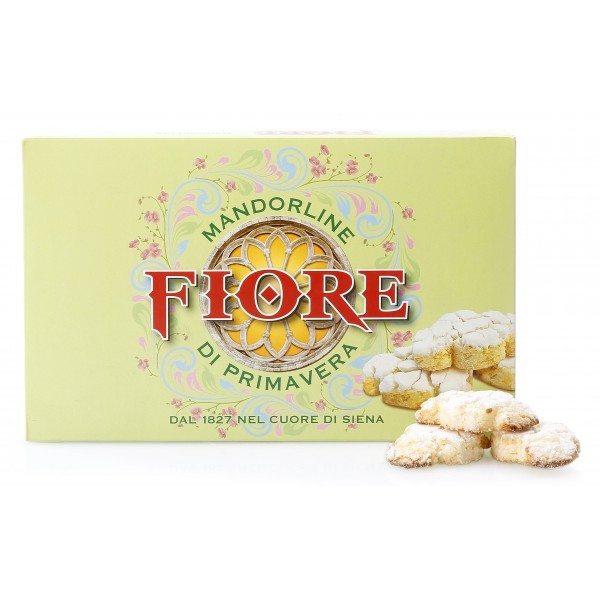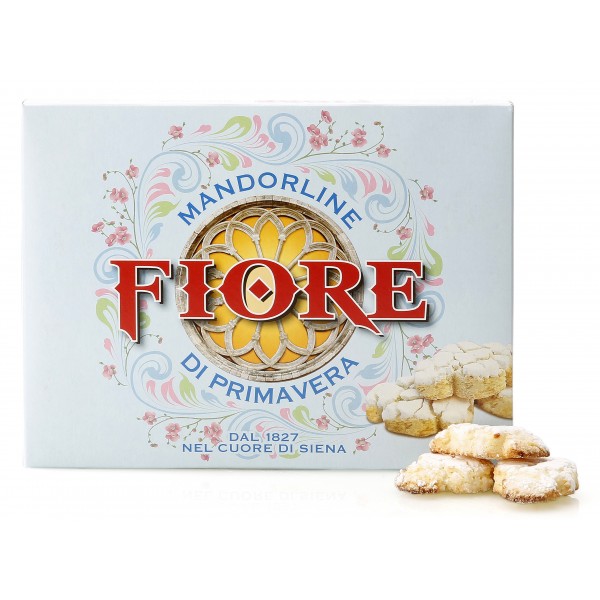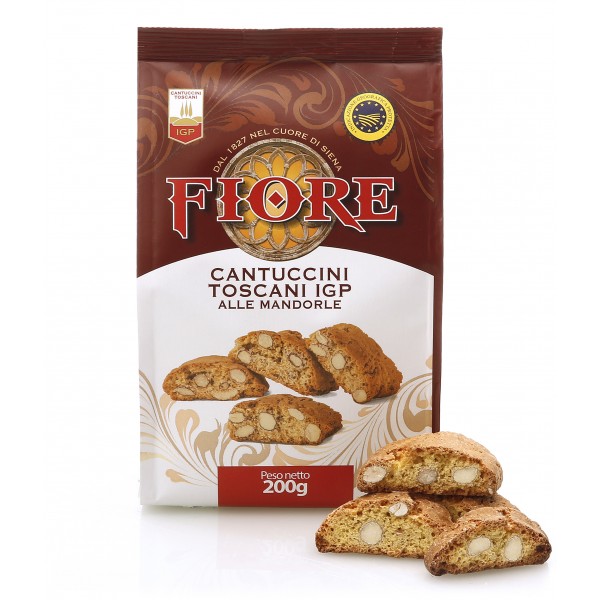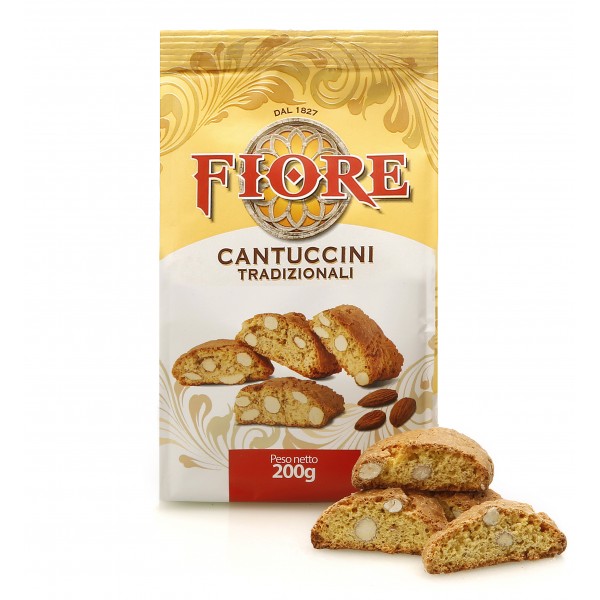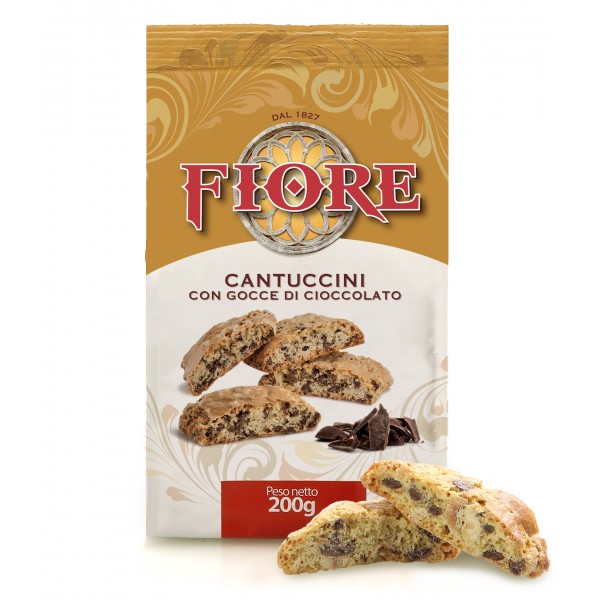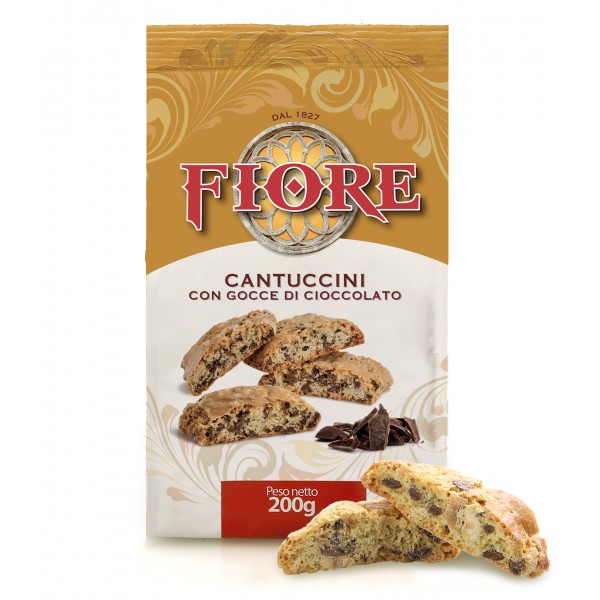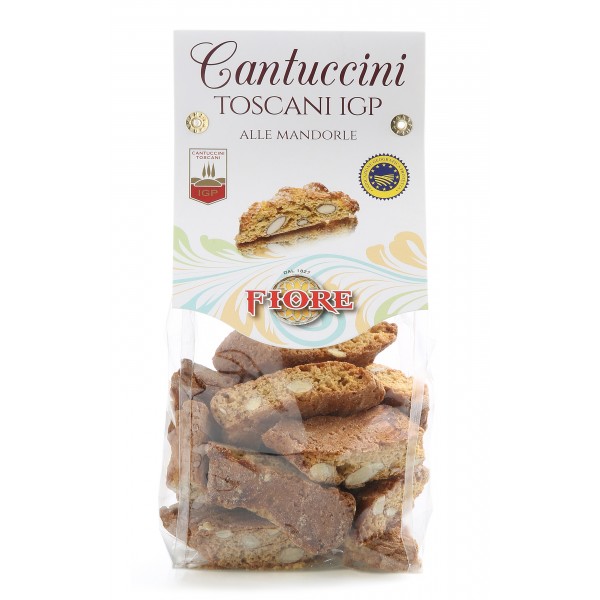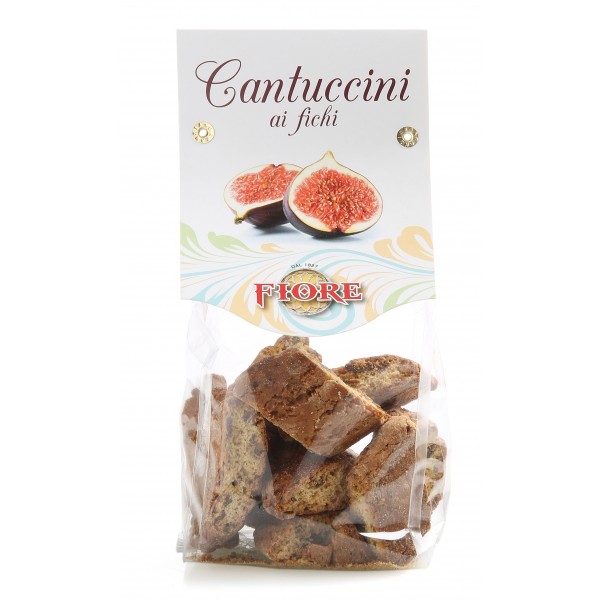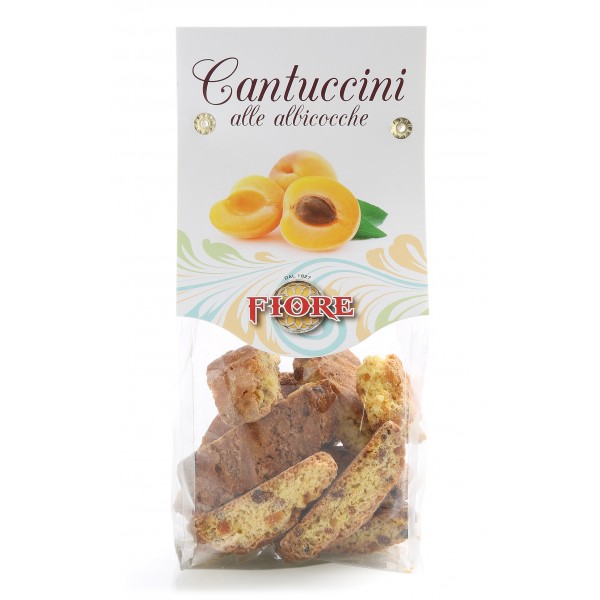No products
Refine
Extra
Pastry
-
Fiore - Panforte of Siena since 1827 - Traditional Ricciarelli of Siena with...
Traditional Ricciarelli of Siena with Almonds made according to the ancient Sienese traditions. In '400 the Florentine priest Arlotto Mainardi, better known as Piovano Arlotto, listing the "talents" of some Italian cities wrote: "in Milan you can make many haberdasheries and armadours, and in Florence the good drapes, in Bologna the sausages, and in Siena...
3,79 € -
Fiore - Panforte of Siena since 1827 - Glazed Ricciarelli of Siena with...
Glazed Ricciarelli of Siena with Almonds made according to the ancient Sienese traditions. In '400 the Florentine priest Arlotto Mainardi, better known as Piovano Arlotto, listing the "talents" of some Italian cities wrote: "in Milan you can make many haberdasheries and armadours, and in Florence the good drapes, in Bologna the sausages, and in Siena the...
5,58 € -
Fiore - Panforte of Siena since 1827 - Ricciarelli of Siena with Dark...
Ricciarelli of Siena with Dark Chocolate made according to the ancient Sienese traditions. In '400 the Florentine priest Arlotto Mainardi, better known as Piovano Arlotto, listing the "talents" of some Italian cities wrote: "in Milan you can make many haberdasheries and armadours, and in Florence the good drapes, in Bologna the sausages, and in Siena the...
5,58 € -
Fiore - Panforte of Siena since 1827 - Glazed Ricciarelli with Cocoa - Pastry...
Glazed Ricciarelli with Cocoa made according to the ancient Sienese traditions. In '400 the Florentine priest Arlotto Mainardi, better known as Piovano Arlotto, listing the "talents" of some Italian cities wrote: "in Milan you can make many haberdasheries and armadours, and in Florence the good drapes, in Bologna the sausages, and in Siena the marzapani...
6,75 € -
Fiore - Panforte of Siena since 1827 - Glazed Ricciarelli of Siena with...
Glazed Ricciarelli of Siena with Almonds made according to the ancient Sienese traditions. In '400 the Florentine priest Arlotto Mainardi, better known as Piovano Arlotto, listing the "talents" of some Italian cities wrote: "in Milan you can make many haberdasheries and armadours, and in Florence the good drapes, in Bologna the sausages, and in Siena the...
50,05 € -
Fiore - Panforte of Siena since 1827 - Ricciarelli of Siena with Dark...
Ricciarelli of Siena with Dark Chocolate made according to the ancient Sienese traditions. In '400 the Florentine priest Arlotto Mainardi, better known as Piovano Arlotto, listing the "talents" of some Italian cities wrote: "in Milan you can make many haberdasheries and armadours, and in Florence the good drapes, in Bologna the sausages, and in Siena the...
70,07 € -
Fiore - Panforte of Siena since 1827 - Glazed Ricciarelli of Siena with Cocoa...
Glazed Ricciarelli of Siena with Cocoa made according to the ancient Sienese traditions. In '400 the Florentine priest Arlotto Mainardi, better known as Piovano Arlotto, listing the "talents" of some Italian cities wrote: "in Milan you can make many haberdasheries and armadours, and in Florence the good drapes, in Bologna the sausages, and in Siena the...
50,05 € -
Fiore - Panforte of Siena since 1827 - Mandorline of Spring of Siena - Pastry...
Mandorline of Spring of Siena made according to the ancient Sienese traditions. In '400 the Florentine priest Arlotto Mainardi, better known as Piovano Arlotto, listing the "talents" of some Italian cities wrote: "in Milan you can make many haberdasheries and armadours, and in Florence the good drapes, in Bologna the sausages, and in Siena the marzapani...
9,99 €Sold Out - Not Available -
Fiore - Panforte of Siena since 1827 - Mandorline of Spring of Siena - Pastry...
Mandorline of Spring of Siena made according to the ancient Sienese traditions. In '400 the Florentine priest Arlotto Mainardi, better known as Piovano Arlotto, listing the "talents" of some Italian cities wrote: "in Milan you can make many haberdasheries and armadours, and in Florence the good drapes, in Bologna the sausages, and in Siena the marzapani...
9,99 €Sold Out - Not Available -
Fiore - Panforte of Siena since 1827 - Mandorline of Spring of Siena - Pastry...
Mandorline of Spring of Siena made according to the ancient Sienese traditions. In '400 the Florentine priest Arlotto Mainardi, better known as Piovano Arlotto, listing the "talents" of some Italian cities wrote: "in Milan you can make many haberdasheries and armadours, and in Florence the good drapes, in Bologna the sausages, and in Siena the marzapani...
9,99 €Sold Out - Not Available -
Fiore - Panforte of Siena since 1827 - Mandorline of Spring of Siena with...
Mandorline of Spring of Siena made according to the ancient Sienese traditions. In '400 the Florentine priest Arlotto Mainardi, better known as Piovano Arlotto, listing the "talents" of some Italian cities wrote: "in Milan you can make many haberdasheries and armadours, and in Florence the good drapes, in Bologna the sausages, and in Siena the marzapani...
9,99 €Sold Out - Not Available -
Fiore - Panforte of Siena since 1827 - Cantuccini Toscani I.G.P. with Almonds...
Cantuccini Toscani I.G.P. with Almonds made according to the ancient Sienese traditions. From the second half of the 1500s, present on the table of the doctors' court. They have their roots in the 16th century and the name seems to derive from "canto", part of a whole or from "cantellus", in Latin "piece or slice of bread", a salted biscuit consumed by...
2,79 € -
Fiore - Panforte of Siena since 1827 - Traditional Tuscany Cantuccini with...
Traditional Tuscany Cantuccini with Almonds made according to the ancient Sienese traditions. From the second half of the 1500s, present on the table of the doctors' court. They have their roots in the 16th century and the name seems to derive from "canto", part of a whole or from "cantellus", in Latin "piece or slice of bread", a salted biscuit consumed...
1,24 €Sold Out - Not Available -
Fiore - Panforte of Siena since 1827 - Traditional Tuscany Cantuccini with...
Traditional Tuscany Cantuccini with Almonds made according to the ancient Sienese traditions. From the second half of the 1500s, present on the table of the doctors' court. They have their roots in the 16th century and the name seems to derive from "canto", part of a whole or from "cantellus", in Latin "piece or slice of bread", a salted biscuit consumed...
2,37 € -
Fiore - Panforte of Siena since 1827 - Traditional Tuscany Cantuccini with...
Traditional Tuscany Cantuccini with Almonds made according to the ancient Sienese traditions. From the second half of the 1500s, present on the table of the doctors' court. They have their roots in the 16th century and the name seems to derive from "canto", part of a whole or from "cantellus", in Latin "piece or slice of bread", a salted biscuit consumed...
3,99 € -
Fiore - Panforte of Siena since 1827 - Tuscany Cantuccini with Chocolate...
Tuscany Cantuccini with Chocolate Drops made according to the ancient Sienese traditions. From the second half of the 1500s, present on the table of the doctors' court. They have their roots in the 16th century and the name seems to derive from "canto", part of a whole or from "cantellus", in Latin "piece or slice of bread", a salted biscuit consumed by...
1,24 €Sold Out - Not Available -
Fiore - Panforte of Siena since 1827 - Tuscany Cantuccini with Chocolate...
Tuscany Cantuccini with Chocolate Drops made according to the ancient Sienese traditions. From the second half of the 1500s, present on the table of the doctors' court. They have their roots in the 16th century and the name seems to derive from "canto", part of a whole or from "cantellus", in Latin "piece or slice of bread", a salted biscuit consumed by...
2,20 € -
Fiore - Panforte of Siena since 1827 - Cantuccini Toscani I.G.P. with Almonds...
Cantuccini Toscani I.G.P. with Almonds made according to the ancient Sienese traditions. From the second half of the 1500s, present on the table of the doctors' court. They have their roots in the 16th century and the name seems to derive from "canto", part of a whole or from "cantellus", in Latin "piece or slice of bread", a salted biscuit consumed by...
4,29 € -
Fiore - Panforte of Siena since 1827 - Traditional Tuscany Cantuccini with...
Traditional Tuscany Cantuccini with Almonds made according to the ancient Sienese traditions. From the second half of the 1500s, present on the table of the doctors' court. They have their roots in the 16th century and the name seems to derive from "canto", part of a whole or from "cantellus", in Latin "piece or slice of bread", a salted biscuit consumed...
4,13 € -
Fiore - Panforte of Siena since 1827 - Tuscany Cantuccini with Figs - Pastry...
Tuscany Cantuccini with Figs made according to the ancient Sienese traditions. From the second half of the 1500s, present on the table of the doctors' court. They have their roots in the 16th century and the name seems to derive from "canto", part of a whole or from "cantellus", in Latin "piece or slice of bread", a salted biscuit consumed by the Roman...
3,49 € -
Fiore - Panforte of Siena since 1827 - Cantuccini with Apricots - Pastry -...
Cantuccini with Apricots made according to the ancient Sienese traditions. From the second half of the 1500s, present on the table of the doctors' court. They have their roots in the 16th century and the name seems to derive from "canto", part of a whole or from "cantellus", in Latin "piece or slice of bread", a salted biscuit consumed by the Roman soldiers.
3,49 €




